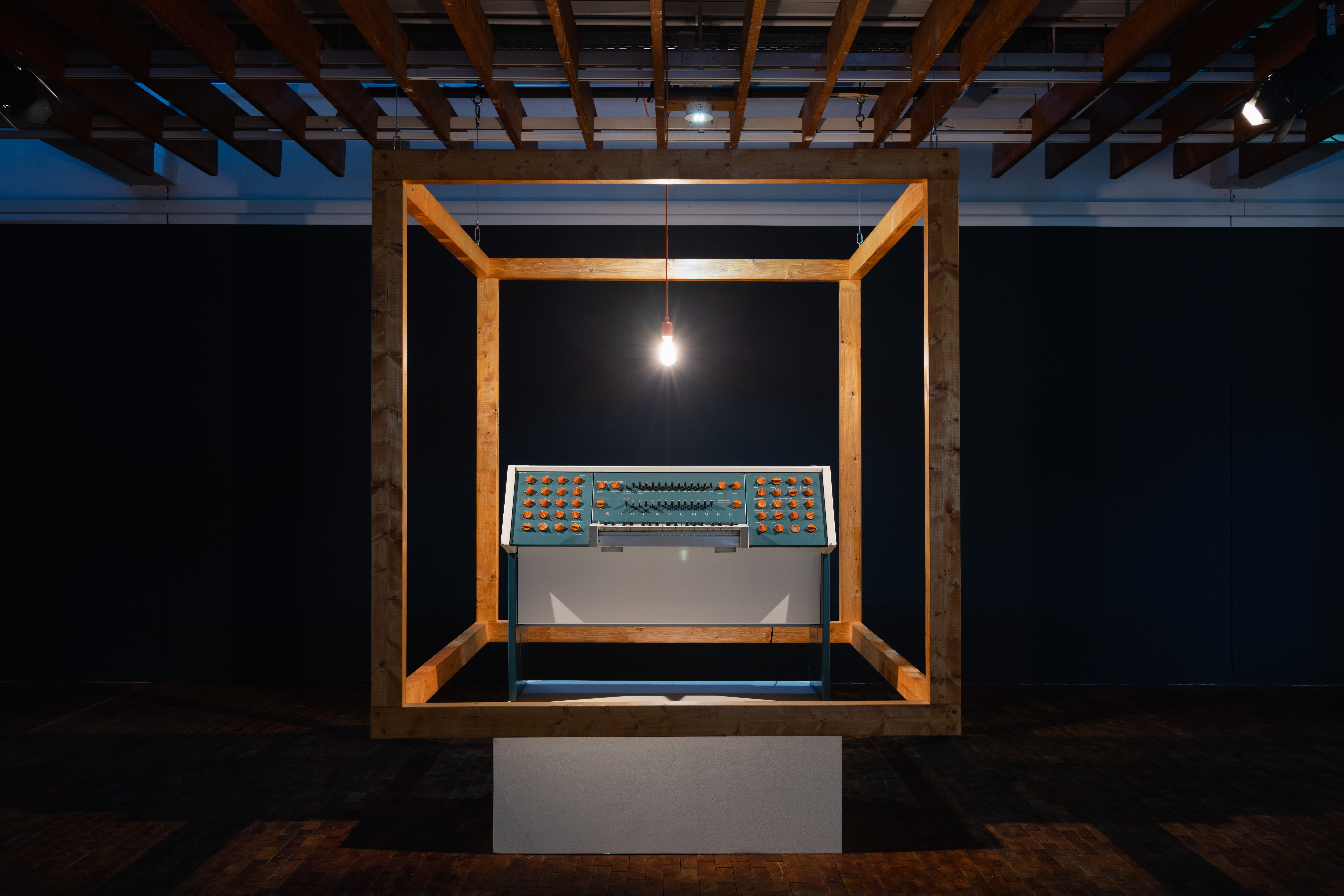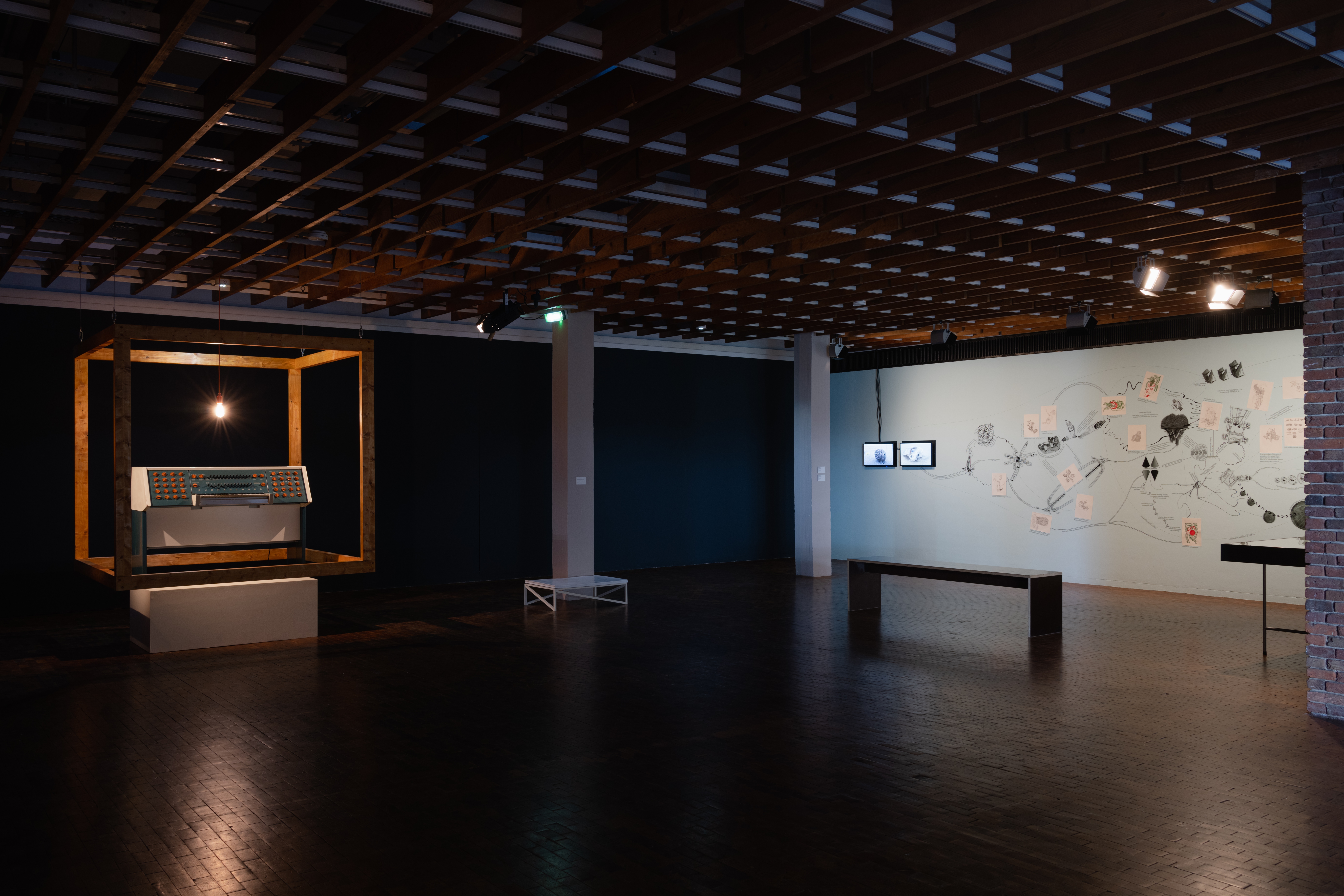The Emotional Residue of an Unnatural Boundary (2023)
two-channel sound sculpture; Subharchord I/II 1964 Prototype, Transducers. Commissioned by the Junge Akademie der Künste Berlin under the AI Anarchies program, and exhibited as part of Broken Machines & Wild Imaginings. Voice: Ece Canlı. Length: 7:23 minutes, loop.

Text by Ayesha Hameed:
When Pedro and I first talked about The Emotional Residue of an Unnatural Boundary I misheard the name of the Dialect Recognition software as the Dialectic of Recognition software. But like any parapraxis, my misrecognition may possibly lay bare something immanent to this work. We know that the dialectic operates to smash the illusion of commodity fetishism, but what if following Benjamin, we stay inside the phantasmagoria of the moment before awakening. Stay with the magical table dancing on its head, with the glass and chrome of the arcades? But let’s take this gloss to the border instead, that violent, abstracted regime drawn on a map and etched with blood.
The fetish of the nation state dreams of the vaporisation of unwanted bodies.
Oliveira stages the question: what if we stayed at this threshold? With the dream of such vaporisation, as it were, made flesh? That is, rather than starting with the fantasy made complete in the successful subsumption and erasure of the unwanted immigrant on the one hand. Or, on the other hand, ending with the refusal of the border’s abstraction by the lived experiences of illegalised migrants from below. Let’s instead stay here with the ghost in the machine: or more accurately the body in the machine, or even, the machine in the body. What we encounter here is not an attempt to recuperate the fleshly body but rather, in an endless feedback loop between machine and unwanted immigrant, we are invited to stay in this uncertain ground: with the fantasy of erasure, seeing how its machinery may be infected and undone in this threshold moment.
The endless feedback between the Stasi-era synthesizer and the voice mimicking the filter it shares with the Dialect Recognition software, lays bare the fantasy of harnessing pleasures of the sonic to consolidate the abstraction of the nation state and its undertow of violence. The synthesizer, made to produce centrifugal music, undone. The voice, taking on the tools of the master’s house, guttural, present and absent. The nebulous spatiality of music, borders and voice setting the Subharchord II synthesizer into an unending dance of its own: here turned inside out rather than upside down.

Funded by the Junge Akademie der Künste and the Bundesregierung für Kultur und Medien. Voice recordings by Colin Girod at Master Tape Studio in Porto, October 2022. Exhibition design by Ben James.
With thanks to: Clara Herrmann, Nataša Vukajlovic, Sarah Ciston, Ece Canlı, Lars Bjørn Lehmann, Giuliana Corsi, Gugulethu Duma, M. Takara, Ayesha Hameed, Ben James, Carla Boregas, Eike Walkenhorst, Colin Girod, Andrei Cucu, Malte Giesen, Genöel von Lilienstern, ZK/U Berlin, Maya Indira Ganesh.
A borderland is a vague and undetermined place created by the emotional residue of an unnatural boundary. […] Los atravesados Iive here: the squint-eyed, the perverse, the queer, the troublesome, the mongrel, the mulato, the half-breed, the half dead; in short, those who cross over, pass over, or go through the confines of the “normal.“
– Gloria Anzaldúa, “Borderlands/La Frontera” (1987)
Photos by Peter Oliver Wolff.